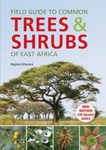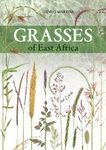Field / Identification Guide
By: Alma Möller(Author), Rolf Becker(Author)
318 pages, 870+ colour photos and b/w illustrations
![Field Guide to the Succulent Euphorbias of Southern Africa Field Guide to the Succulent Euphorbias of Southern Africa]()
Click to have a closer look
About this book
Customer reviews
Biography
Related titles
About this book
The Field Guide to the Succulent Euphorbias of Southern Africa by Alma Möller and Rolf Becker is a pioneer publication on euphorbias in southern Africa. It is a beautifully illustrated, full colour identification guide that makes it easy for the layperson as well as anybody interested in the flora of southern Africa to identify a particular species.
The guide contains:
- Introductory chapters containing general information about the species characters, how to identify an euphorbia, growing euphorbias in cultivation, gardening with euphorbias, medicinal and other uses, herbaceous species and invaders.
- Detailed descriptions of 224 species, including emphasis on distinguishing features, habitat, distribution maps, conservation status, scientific and known common names, as well as notes on similar species.
- Similar looking species are grouped together in 18 species groups, based on easily recognisable morphological characters. Group 19 contains previously undescribed species, and Group 20 contains species of uncertain status.
- More than 870 full-colour photographs and illustrations.
- Taxonomic classification.
- Glossary and index to scientific and common names.
Customer Reviews
Biography
Alma Möller graduated with a Bachelor of Science in Botany and Genetics, and a Master of Science in Entomology, after obtaining a postgraduate certificate in Electron Microscopy. She worked at the University of Limpopo as Electron Microscopist for 20 years. In 2008 she retired to become a very enthusiastic miniaturist and devoted Euphorbiaphile.
Rolf Becker graduated with a Bachelor of Science in Chemistry and Biochemistry, as well as a Master of Science and PhD in Biochemistry. He was Professor of Biochemistry at the University of Limpopo for 20 years, while also furthering his career in university administration, focused on change management. Currently, he is Dean of the Faculty of Natural Resources and Spatial Sciences at the Namibia University of Science and Technology. Together they spent the last fifteen years travelling throughout southern Africa studying live populations of euphorbias in their natural environment.
Field / Identification Guide
By: Alma Möller(Author), Rolf Becker(Author)
318 pages, 870+ colour photos and b/w illustrations




















![Flora Vascular de Canarias [The Vascular Flora of the Canary Islands]](http://mediacdn.nhbs.com/jackets/jackets_resizer_medium/26/262479.jpg?height=150&width=102)













